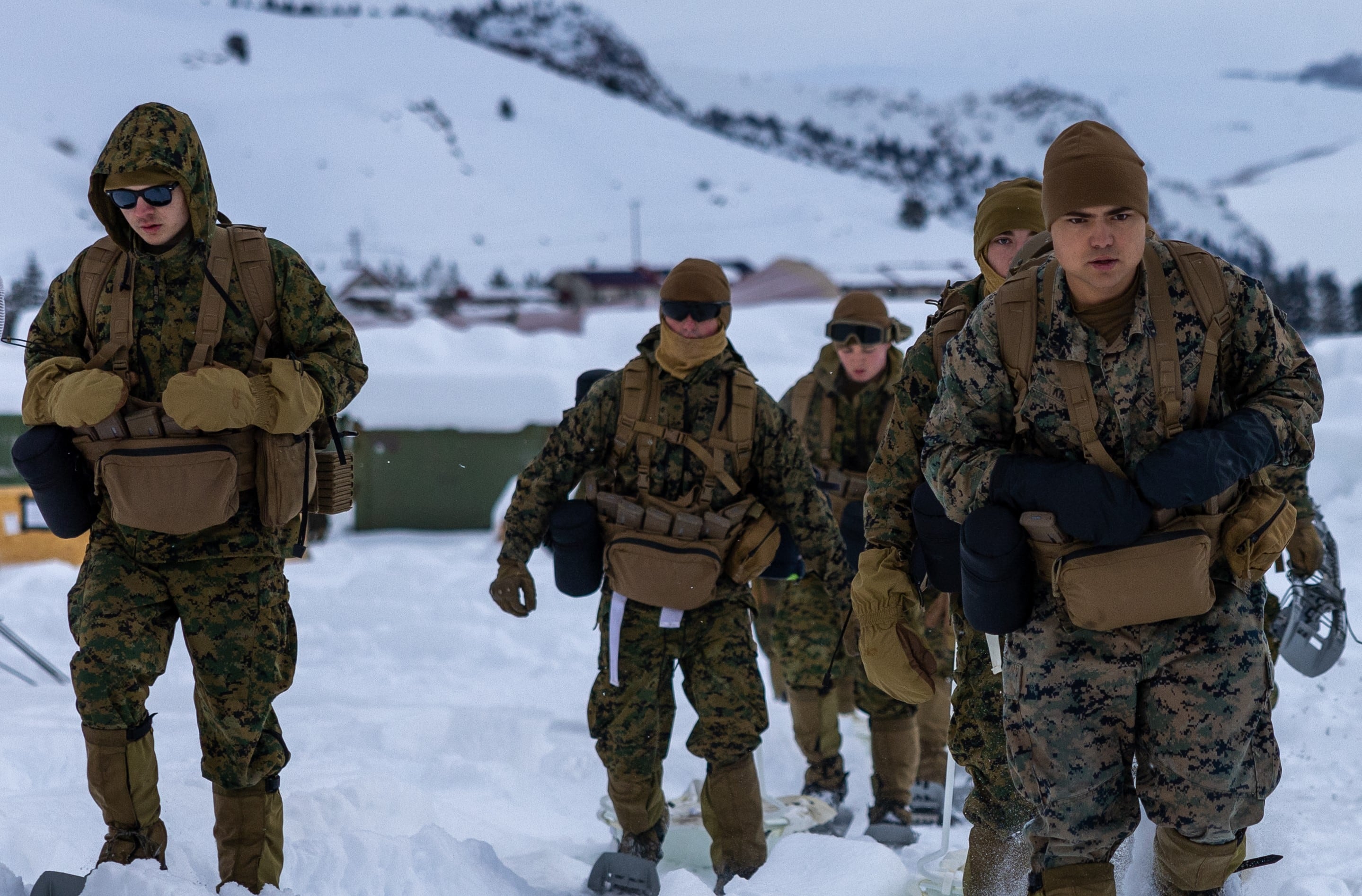With the establishment of a new Pentagon office for Arctic and global resilience and new service-level emphasis on training in cold regions, U.S. military operations in the snow and ice are decidedly in the spotlight.
But even as more troops participate in cold-weather training, injuries associated with the cold are on the way down.
A new survey published in the November version of the Medical Surveillance Monthly Report shows that cold-weather injuries across the services dropped more than 15% between winter 2021–2022 and the 2022–2023 cold season.
While that drop is especially notable, data shows that cold injuries such as frostbite and hypothermia have been decreasing since 2020 for the Army and the Marine Corps, the services with the highest numbers of cold-injury rates.
RELATED

The Marine Corps had the greatest year-over-year drop, with a 22% reduction in cold injury rates in 2022 compared to the prior winter. And while a ramp-up in cold-weather ops and a decrease in cold-weather injuries may seem paradoxical, experts say the two trends are likely related.
Dr. John Castellani, a research physiologist at the U.S. Army Research Institute of Environmental Medicine, said interest in preventing potentially deadly conditions like hypothermia has been central to his career since the start of his nearly three-decade career at the research institute. He arrived at the institute, he said, shortly after the February 1995 hypothermia deaths of four Army Rangers who’d been training in chest-high swamp waters within the boundaries of Florida’s Eglin Air Force Base.
“I’ve been here at USARIEM now for 28 years, and I can say that it’s only been in the last couple of years that we’ve tried to think about more resources towards cold-weather research and ways to improve function there,” Castellani said.
Castellani attributes the decrease in cold injuries ― from 534 across active and Reserve components in winter 2018–2019 to 376 in 2022 ― to growing awareness and training regarding the severity of cold-weather threats.
Frostbite incidents, which fluctuate year to year, were down to 125 in the 2022–2023 cold season from a 2021–2022 high of 189. Cases of hypothermia, when body temperature drops to an abnormally or dangerously low level, saw a five-year low in winter 2022–2023, with 31 compared with 38 the previous year.
Cases of immersion foot, also called trench foot, which occurs when feet are submerged in water for an extended period of time, were also below historical averages. The 76 cases in 2022–2023 were above the 67 for the previous winter but well below the five-year high of 106 seen in winter 2019–2020.
While it’s true that the past winter was historically mild ― the fifth-warmest meteorological winter on record for the Northern Hemisphere ― Castellani stressed that cold-weather injuries do not always correlate to the coldest locations, as the tragic Ranger deaths in Florida demonstrated. Rather, he said, they tend to affect troops who are unprepared or under-informed, even if they’re training in relatively temperate locations or conditions.
“With [North] Carolina as an example, you’re not going to get frostbite, but cold, wet exposure is real,” Castellani said. “And in fact that’s probably more dangerous, at least from a perspective of, potentially, hypothermia.”
The data seems to bear this out. While Fort Wainwright and Joint Base Elmendorf-Richardson in Alaska do have the top two highest counts of cold-weather injuries over the past five years, Camp Lejeune, North Carolina, and Fort Moore, Georgia, also make the top-five list with nearly 100 recorded injuries apiece.
Other hot spots for cold injuries include Fort Carson, Colorado; Fort Drum, New York; and Fort Campbell, Kentucky.
In June 2022, the Army established the 11th Airborne Division at Fort Wainwright and Joint Base Elmendorf-Richardson, Alaska. with a special focus on operating and fighting in extreme cold and at altitude, demonstrating the service’s commitment to competency in these conditions.
Maj. Gen. Brian Eifler, commander of the division, known as the “Arctic Angels,” told Defense One that the number of soldiers using the Army’s Northern Warfare Training Center has doubled since it stood up.
And while cold weather indoctrination training is a requirement for all Alaska-based soldiers, more troops across the services are now training to fight in the cold, with the Marine conducting regular rotational deployments to Norway to train with local troops.
Castellani said the Army also is working to provide cold-weather training to troops from bases in the continental U.S. to demystify conditions they might encounter in future deployed operations.
Through this kind of training he said, unit leaders can “learn that [the cold] doesn’t have to be debilitating, and that they can thrive in that environment if they know how to dress correctly and look for certain signs and symptoms.”
The Medical Surveillance Monthly Report also cited a new regulation from Army Training and Doctrine Command that recognizes sickle cell trait, which affects about one in ten troops of African descent, as a potential risk factor for cold injuries. There’s a clear racial component in the data the report published: Black service members were almost three times as likely to sustain a cold-related injury as their white counterparts.
Gender differences were less pronounced, but data shows female troops are slightly less likely to sustain cold injuries than males.
Castellani said that while the literature is not conclusive, sickle cell can affect blood flow to the extremities, which may increase risk for frostbite.
Ultimately, he said, efforts to collect data and clarify risk factors will serve to further enhance preventative efforts and effective preparation for operations in the cold.
“I’m a big believer in prevention,” he said.
Hope Hodge Seck is an award-winning investigative and enterprise reporter covering the U.S. military and national defense. The former managing editor of Military.com, her work has also appeared in the Washington Post, Politico Magazine, USA Today and Popular Mechanics.




